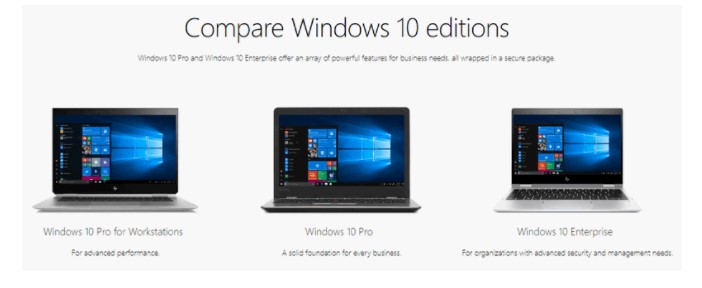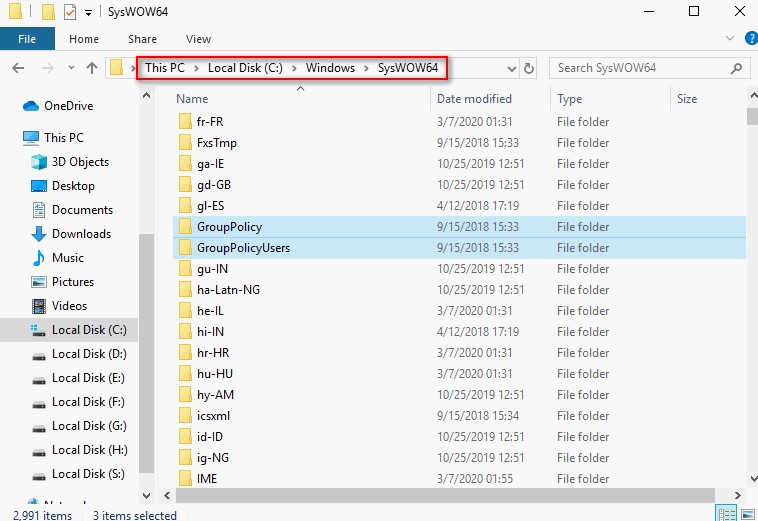Group Policy Editor is an administration tool that people can use to configure key settings on their computers or networks. Users should occasionally open gpedit.msc to configure operating systems, user settings, and applications. However, users may encounter the gpedit.msc not found error; this page will advise you on how to deal with it.
gpedit.msc Not Found on Windows Devices
Group Policy is a feature in Windows; Group Policy Editor is actually a Microsoft Management Console built into Windows that helps users control the computer’s work environment and user accounts.
gpedit.msc Missing Windows 10
If you try to open Group Policy Editor on a computer running Windows 10, you may receive a gpedit.msc not found error (gpedit not found) or a gpedit.msc error is missing (Group Policy Editor is missing in your version of Windows 10). Check the edition of Windows 10 you are using. If you cannot find gpedit.msc, follow the fixes below.
Windows cannot find ‘gpedit.msc’. Make sure you’ve typed the name correctly, then try again.

You have no choice but to click OK in the pop-up window, right? And you need to know effective ways to fix the missing gpedit.msc.
Fix Windows Cannot Find gpedit.msc Windows 10
How to fix Windows can’t find gpedit.msc? You must first try to open or enable it. If that doesn’t work, resolve the gpedit.msc problem according to the solutions below.
How to Enable gpedit.msc
If you find that the Group Policy Editor (gpedit.msc) is missing in Windows 10, you should first try to enable or open gpedit: press Windows + R to open the Run dialog box -> type gpedit.msc -> press Enter or click OK. However, you may still receive a “gpedit not found (gpedit.msc is missing)” error on Windows 10-based computers. Can you fix it?
How to fix gpedit.msc that was not found in Windows 10? There are 3 main solutions.
- Upgrade to Windows 10 Pro or Enterprise.
- Copy and paste GroupPolicy, GroupPolicyUsers, and gpedit.msc.
- Install and enable gpedit.msc by creating a gpedit_enabler.bat file.
To fix a gpedit that you didn’t find, follow these steps carefully.
Method 1: Upgrade to Windows 10 Pro or Enterprise
In fact, Windows 10 Home Edition does not come with Group Policy Editor; No wonder many users have found that the gpedit of the Home Edition has disappeared. The most direct and popular way to fix a gpedit.msc failure is to upgrade your system from Home Edition to Windows 10 Pro or Enterprise.
- Buy a license for Windows 10 Pro / Enterprise; make sure the version supports gpedit.msc.
- Perform a complete installation on your computer; please follow the instructions carefully. During the process, you will be prompted to enter a Pro / Enterprise license key to activate Windows 10.

Method 2: Copy the files and folders
Some users say that gpedit.msc did not solve the problem by simply copying and pasting files and folders to a specific location.
- Open File Explorer in Windows 10.
- Navigate to this path: C: \ Windows \ SysWOW64.
- Browse to GroupPolicy, GroupPolicyUsers, and gpedit.msc.
- Copy these files and folders by pressing Ctrl + C (or otherwise). Navigate to C: \ Windows \ System32 and press Ctrl + V to place the items.

Method 3: Install & Enable gpedit.msc Manually
If you found gpedit.msc in Windows 10 Home (gpedit.msc was not found in the error), you must open and enable Group Policy Editor (gpedit) as follows: press Windows + R to open the Run -> type gpedit dialog box. msc in the text box -> click OK or press Enter. If that doesn’t work, you’ll need to install gpedit.msc on Windows 10 Home.
How to install the group policy editor:
- Download the setup.exe for Windows 10 Home.
- Download or create a gpedit_enabler.bat file.
- Double click on setup.exe and follow the instructions to complete the installation.
- Right click on the bat file and choose Run as administrator.
- Wait for the commands to complete.
- Press any button to exit the command prompt window.
- Restart the computer and try to open the Group Policy Editor again.

How to make a gpedit_enabler.bat file: create a new text file -> copy & paste the following content into it -> give it a name (like gpedit_enabler) and save it as a bat file.
